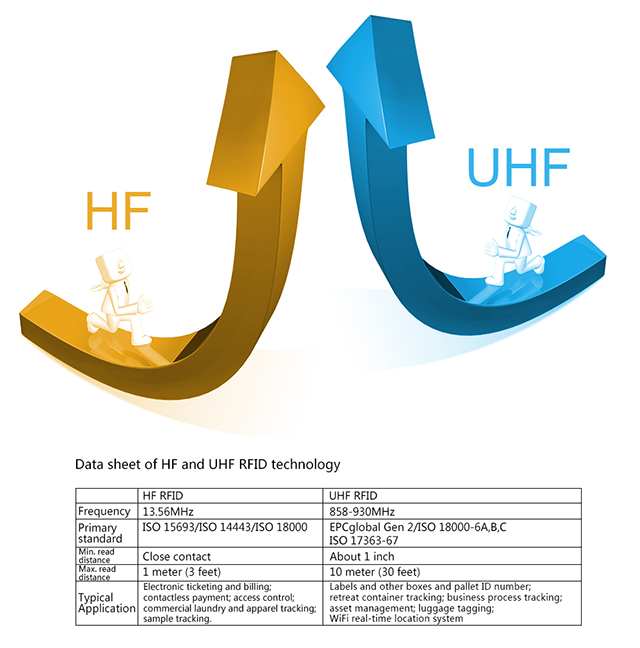The Debate Between High-frequency and UHF RFID
In high-frequency(hereafter called HF) and UHF RFID technology, the debate between the both has never stopped. Focus is HF or UHF can best meet the needs of the application. However, with the ever-changing RFID technology, traditional thoughts to analyze HF and UHF RFID technology is meaningless, especially with the further development of UHF, the trigger for this debate three long-term assumption also need reviewing.
Three Traditional Assumption:
1. UHF can not be applied to liquids and metals;
2. Short-range reading only use 13.56 MHz;
3. 13.56 MHz most suitable for single product level labeling needs;
For example, the 13.56 MHz technology was advocated long ago for liquids and metals, but until now the technology was used in these fields, and UHF tags have increased the RF performance with metals. At the same time, HF is also currently being used in the supply chain, which was previously only possible with UHF.

Need to use new thought to treat HF and UHF
The maturity of the technology is one of the reasons that the traditional debate over HF and UHF is no longer applicable. The traditional view is that: UHF is more suitable for long-distance reading, while HF is more suitable for short-range item-level identification or liquid or metal material . But this view undoubtedly over-simplifies how to choose the most suitable business processes and technical processes, and some of the technology has been chosen a very limited opportunity. It is not realistic to think that HF technology is being used for metals and liquid materials. UHF is also often used in supply chain management to identify containers or pallets that contain liquids or metals.
Using an example to illustrate this issue, after testing HF and UHF technologies, Boeing Company selected UHF tags to identify aircraft parts to detect pre-takeoff conditions. If these aircraft parts are to be read at close range, there will be metal or other disturbing factors. So Boeing is using metal UHF tags to identify metal objects - something few people thought before.
Southeast Asia's newest and largest airport - Bangkok Airport in Thailand also uses UHF RFID tags to identify the entrance of the trunk. The trunk itself has a lot of metal, but UHF RFID tags can still be read.
Above two examples demonstrate an application and evolution of RFID technology and prove that the traditional old thought no longer applies to the limitations of this technology. By focusing solely on the limitations of technology, it can discourage some of the unintended aspects of the R & D process that are of importance to technological development and thus detrimental to the realization of commercial value. Therefore, around the HF and UHF technologies, the core value of RFID lies in serving the process and technology will improve as the demand evolves.
